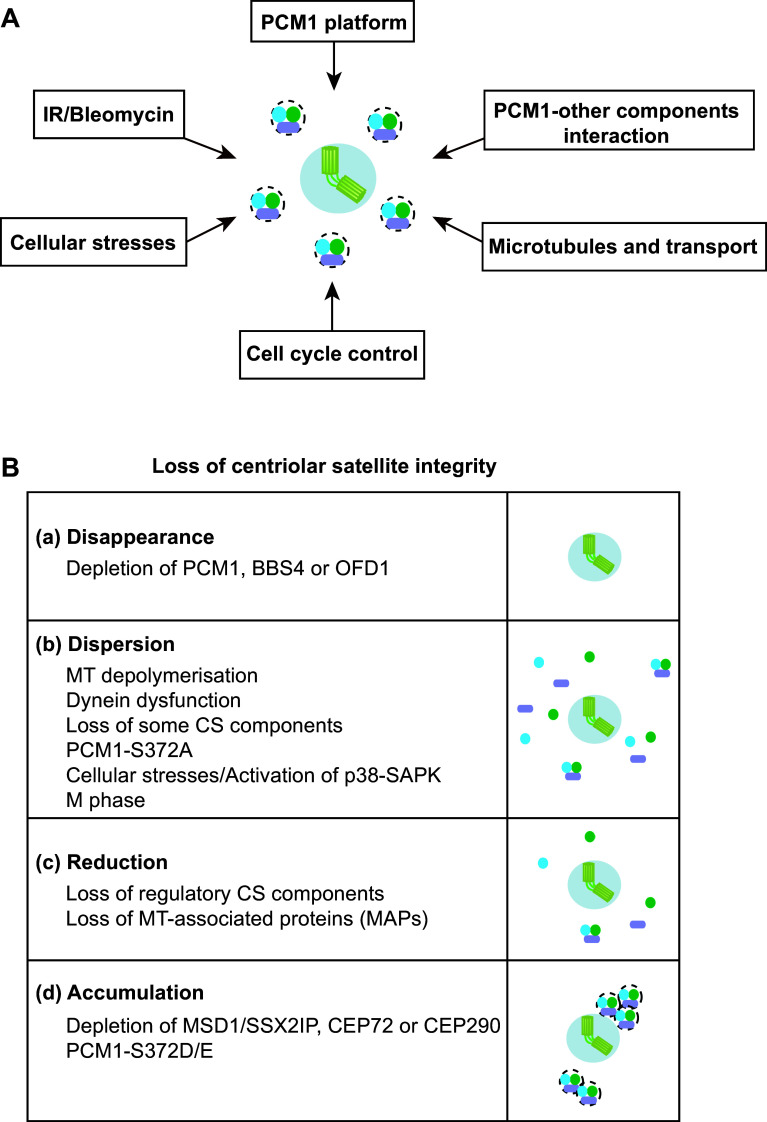Fig. 2.
Factors and requirements that ensure centriolar satellite integrity. a Centriolar satellite organisation is regulated by a number of both intrinsic and external cues. b Outcomes of centriolar satellite integrity defects imposed by various conditions. a Disappearance. siRNA-mediated depletion of certain satellite components (e.g. PCM1, BBS4 and OFD1) leads to the disappearance of centriolar satellite particles. b Dispersion. Microtubule (MT) depolymerisation, impairment of the dynein motor, depletion of some components of centriolar satellites (CS), introduction of PCM1-S372A and exposure to various cellular stresses result in the dispersion of CS away from the centrosomal area. CS also becomes dispersed during M phase. Activation of the p38-SAPK MAP kinase pathway also compromises CS intensities. c Reduction. Depletion of regulatory satellite components leads to either the reduction of the number of CS particles or reduced intensities of CS. d Accumulation. Depletion of MSD1/SSX2IP, CEP72 or CEP290 or introduction of PCM1-S372D/E leads to abnormal accumulation of CS around the centrosome

